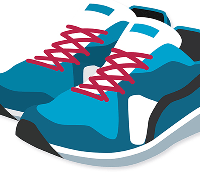April is National Foot Health Awareness Month! Did you know right now, nearly 7 million Americans are living with a chronic wound, and more than two million of those are suffering from diabetic foot ulcers. Sadly, if left untreated, non-healing wounds can lead to infection, amputation and even loss of life.
- Approximately 80% of lower limb amputations are preceded by a non-healing foot ulceration.
Some of the primary risk factors for wounds of the feet include: neuropathy, deformity of the foot, history of foot ulceration, absent or diminished pulses and prior amputation.
The most common types of foot wounds are diabetic foot ulcers, venous stasis ulcers, arterial or ischemic ulcers and pressure ulcers.
There are preventative measures everyone can do to improve foot health. The MHP Wound Care offers the following foot care tips:
- Check your feet for red spots, cuts, swelling, blisters, sores or other injuries daily.
- Wash your feet every day and dry them with care, especially between the toes.
- Wear properly fitting shoes that do not rub or pinch your feet.
- Always wear socks or stockings with your shoes, and never walk barefoot or while wearing just socks.
- Physical activity can help increase circulation in your feet. Consult your healthcare team to see which physical activity is right for you.
Regular foot inspections are key to prevention. All patients, but especially people living with diabetes, should take off their socks at every check-up to check for any problems with your feet. Proper foot wear, a healthy diet and maintaining healthy glucose levels can also help prevent wounds.
For more information on the treatment of diabetic foot ulcers or chronic or infected wounds, please visit our website myMHP.org/woundcare.
